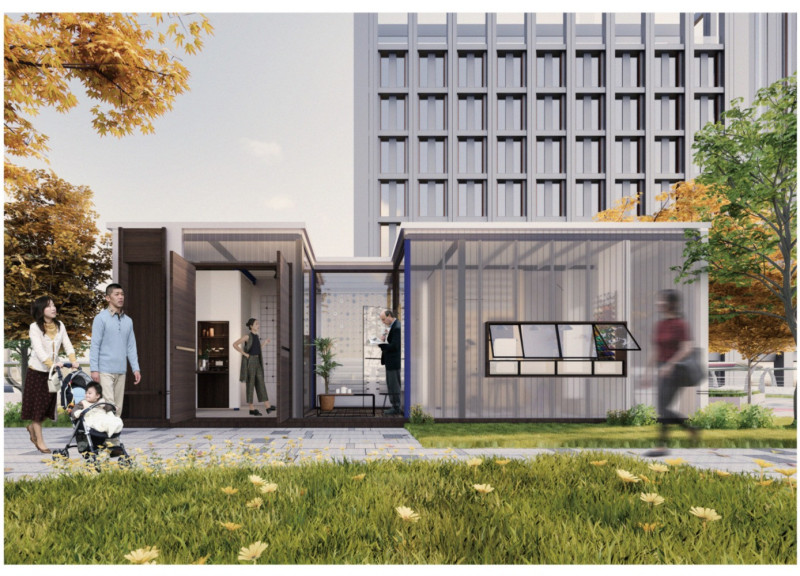5 key facts about this project
FLIPBLOCK provides versatile live-work spaces designed for handicraft producers in an urban setting. The project addresses the growing need for flexible environments that support both traditional craftsmanship and modern business demands. With a focus on adaptability, the design aims to preserve the relevance of artisanal trades, such as tailoring, in today’s economy.
Design Concept
At the center of FLIPBLOCK's design is the idea of adaptability, achieved through rotating functional walls. These walls allow for easy changes between public and private areas. Users can reconfigure their spaces based on immediate needs, whether for retail or living. This flexibility is significant for handicraft producers, offering a practical solution that meets their varied requirements.
Spatial Configuration
The layout of FLIPBLOCK includes different unit types that cater to distinct functions, combining workspace and living areas. Each space can be adjusted, allowing for efficient use that reflects the activities taking place inside. This not only improves the workflow for small business owners but also fosters a balance between work and personal life.
Materials and Construction
The choice of materials is key to the project’s performance and appearance. The structure employs a cellular roof deck, which adds visual interest and functionality. A painted steel structure frame provides strength and stability to the building. Low iron U-shape glass enhances natural light, creating a bright and inviting atmosphere. Aluminum awning windows help with ventilation, which is crucial for areas where people work. The use of wood elements, such as wood frame swing doors and a wood flipping table, adds warmth and texture to the interiors.
Design Features
FLIPBLOCK also incorporates unique design elements like rotated display walls and shelves, which allow for flexible product showcasing. These features cater specifically to the needs of retail and artisan spaces. A wood deck courtyard creates a connection to the outdoors, encouraging interaction with the surrounding environment. The overall design emphasizes adaptability and usability, reflecting the needs of modern artisanal practices.



















































